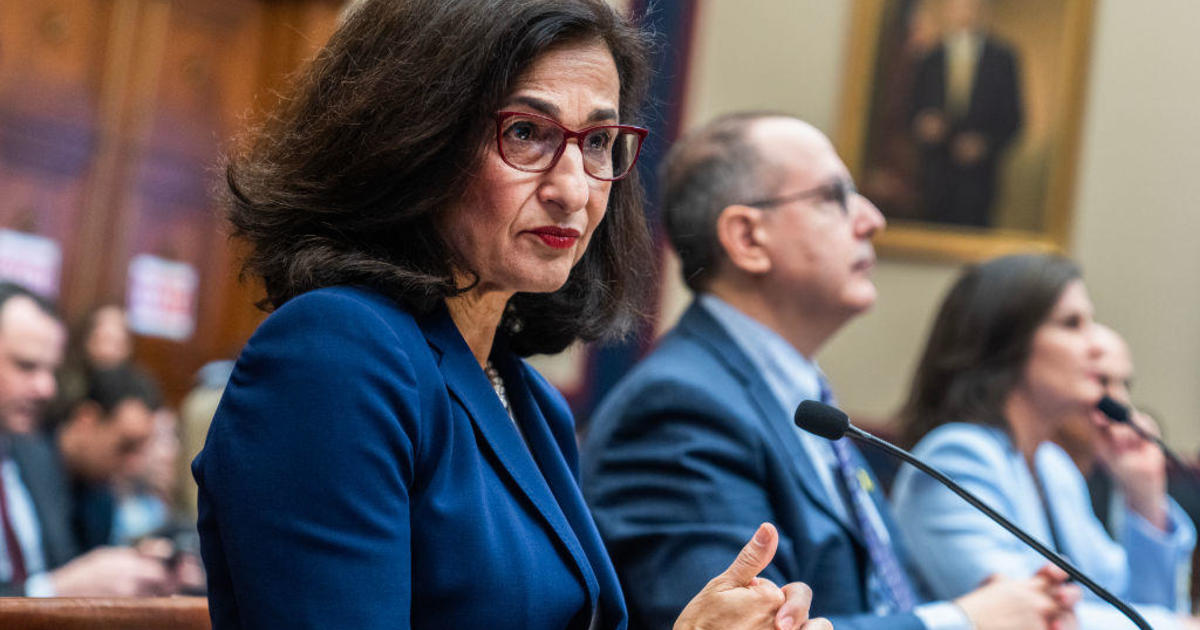NY Blueprint Lists Steps To End AIDS Scourge
ALBANY, N.Y. (CBSNewYork/AP) -- Experts and advocates in New York, a state hit hard in the AIDS epidemic, have drafted a blueprint for reducing new HIV infections and related deaths to the point of nearly ending them.
The plan, requested last year by Gov. Andrew Cuomo and developed by a task force of 63 stakeholders, would expand steps that have already reduced deaths and newly diagnosed infections statewide to fractions of what they once were. At the same time, daily medications have suppressed the virus in about 44 percent of the 132,000 New Yorkers currently diagnosed with HIV, far outpacing the national rate of 25 percent.
The new goals include diagnosing another estimated 22,000 people who don't know they're infected, doubling the suppression rate and reducing new HIV infections to below 750 a year by 2020.
NY Blueprint Lists Steps To End AIDS Scourge
"It's going to save the state money in the long run, but we're going to need some leadership from the governor and the Legislature" Mark Harrington, executive director of Treatment Action Group and a task force member, told WCBS 880's Alex Silverman.
Harrington said the plan was finished back in January before budget season. But the Cuomo administration has been sitting on it since.
The governor's office has not responded to WCBS 880's request for comment.
Some advocates on the governor's task force say spending $2.25 billion on treatment to save $6.8 billion from improved general health, avoided crisis illnesses and prevented HIV infections would net $4.5 billion in Medicaid savings. The other big expense would be another $600 million or more in additional housing costs to help support 10,000 to 12,000 infected and poor New Yorkers who are homeless or lack stable housing, many drug addicted or mentally ill.
According to highlights obtained by The Associated Press, other measures include more routine and targeted HIV testing, increased outreach to diagnosed individuals who have fallen out of care, full decriminalization for carrying condoms and syringes, enacting an anti-discrimination law for transgender people, comprehensive sexual health education in New York schools, improving access to confidential HIV treatment for youths and increased housing support for homeless youths.
"The notion that implementing an effective plan to end AIDS is too expensive just doesn't hold water," said Housing Works chief executive Charles King, another task force member. His organization and Harrington's group wrote the report projecting the savings, noting that half the New Yorkers with HIV are in Medicaid, an entitlement program, and that the state has negotiated volume discounts with drug companies that should significantly cut costs.
The New York Health Department's AIDS Institute has $104 million budgeted this fiscal year, up from $100.8 million last year, according to the state Budget Division. Spending by Medicaid on recipients with HIV is $1.6 billion. About $10 million is targeted this year for the blueprint initiative.
Dr. Denis Nash, professor of epidemiology and biostatistics at the City University of New York's School of Public Health, said the medications are very effective, new drugs are on the horizon, and there's a lot of ongoing research for a cure or therapeutic vaccine, though there are no promising candidates at the moment. The goal of only 750 new cases a year by 2020 -- both new diagnoses and the actual number of new infections -- is realistic and New York could probably do even better, he said.
Most of the numbers are from urban areas, especially New York City. The state's success compared to the rest of the country so far stems from more awareness, more testing and more productive use of Medicaid, Nash said. Needle exchanges and free condoms may be among reasons New York has been able to reduce new HIV infections over time, he said.
More than 130,000 people in New York have died with diagnoses of HIV or AIDS in the past 30 years, including 2,019 in 2013, according to health officials. That's almost 20 percent of 660,000 deaths nationally. New diagnoses statewide were 3,200 in 2013, down from more than 15,000 in 1992 and again in 1993.
Effective treatments starting in the mid-'90s constituted a major medical achievement with a new virus that nobody initially knew how to treat, or even that it was a virus, Nash said. Now millions of people globally are alive who wouldn't be as a consequence, he said.
Harrington, HIV-positive since 1985, said he attended a lot of funerals before the antiviral medications were developed, adding that they're now less toxic, and he's taken the same three daily pills for a decade with essentially no side effects. "It seemed like magic, a miracle, a medical miracle,'' he said.
Dr. Anthony Fauci, director of the National Institute of Allergy and Infectious Diseases, said there's a scientific basis to everything New York's proposing, making it feasible. The life-saving individual drug therapy dramatically reduces the likelihood of infecting others, and a large initial investment should lead to somewhat distant but extraordinary benefits and net savings, he said.
(TM and © Copyright 2015 CBS Radio Inc. and its relevant subsidiaries. CBS RADIO and EYE Logo TM and Copyright 2015 CBS Broadcasting Inc. Used under license. All Rights Reserved. This material may not be published, broadcast, rewritten, or redistributed. The Associated Press contributed to this report.)



